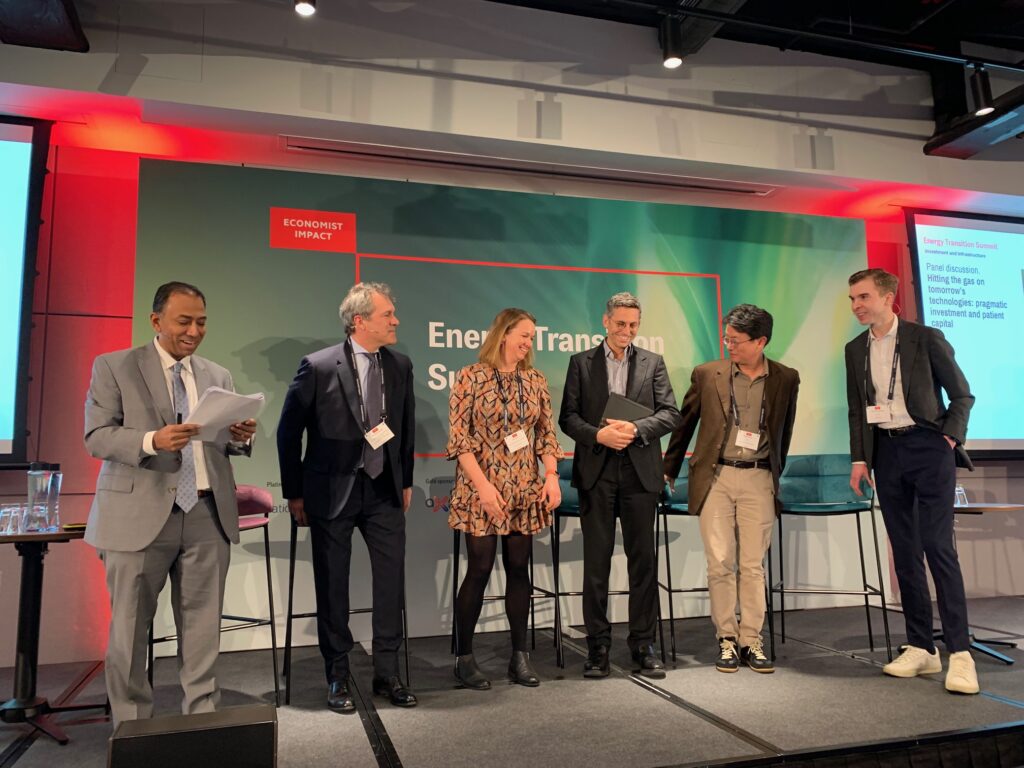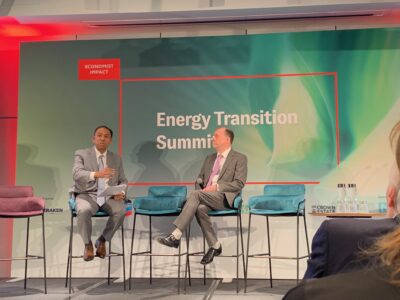 How do I begin? There were so many nuggets of insights packed into a single day at the Economist’s Energy Transition Summit and I was in constant FOMO mode…wondering what conversations I am missing in the other track or round-table discussion.
How do I begin? There were so many nuggets of insights packed into a single day at the Economist’s Energy Transition Summit and I was in constant FOMO mode…wondering what conversations I am missing in the other track or round-table discussion.
Alas, I was never good at taking notes – mistakenly thinking that I can still rely on my aging memory. So here goes my recollection of the day – in short bursts & taglines…
Lord Callanan (Minister for Energy Efficiency and Green Finance) hinted at the potential of nuclear though clearly not economically viable yet and the bet on hydrogen being the choice for long duration storage at scale.
The conversation turned to the critical minerals for energy and where/how it’s being sourced. If we are not careful, ‘dirty’ mining will probably negate all impact of green technologies – and not just on environment but worse on the community. It’s refreshing to hear a very direct and honest perspective from Damilola Ogunbiyi (Chief executive and special representative of the UN Secretary-General for Sustainable Energy for All).
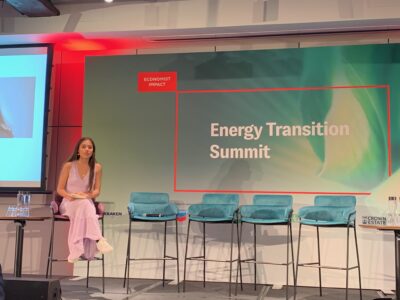 AND it’s not every day one gets to hear such conviction from a young activist like XIye Bastida, who reminded us why we are doing all this – for the now and more importantly the future. Quoting her: we just need to emulate Mother Earth where nothing goes to waste hence where closed-loop recycling and circularity is the way to go.
AND it’s not every day one gets to hear such conviction from a young activist like XIye Bastida, who reminded us why we are doing all this – for the now and more importantly the future. Quoting her: we just need to emulate Mother Earth where nothing goes to waste hence where closed-loop recycling and circularity is the way to go.
Moving on, then a string of acronyms was thrown around – “nimby, banana, cave”. I don’t even remember what it was (except for nimby aka Not-in-my-backyard’) but we won’t go there…
On the regulatory front, market-based policy the likes of carbon tax (e.g. CBAM) and carbon pricing will incentivise businesses to reduce emissions and help level the playing field. This will encourage the overall reduction in emissions including mitigating ‘carbon leakage’ and increasing transparency.
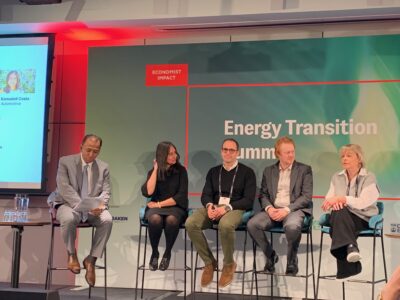 Turning the table towards capital and funding, it’s the same message we heard before i.e. we need to harness the combined power of public and private funding. But caution looms – did we learn our lessons from CleanTech 1.0? For one, this time round we are calling it ClimateTech so a good start. Joke aside, there are many reasons to be hopeful this time round. For one, the market and investors’ expectations are more mature (understanding the time horizon, market-economic fit) as well as a more diverse sectors where the innovation can be applied / scaled (beyond solar and biofuels).
Turning the table towards capital and funding, it’s the same message we heard before i.e. we need to harness the combined power of public and private funding. But caution looms – did we learn our lessons from CleanTech 1.0? For one, this time round we are calling it ClimateTech so a good start. Joke aside, there are many reasons to be hopeful this time round. For one, the market and investors’ expectations are more mature (understanding the time horizon, market-economic fit) as well as a more diverse sectors where the innovation can be applied / scaled (beyond solar and biofuels).
.
.
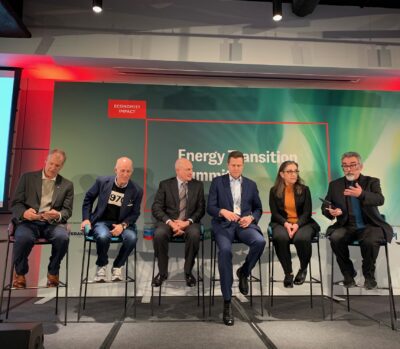 At the Energy Transition Summit, there was quite a bit of airtime allocated for nuclear fusion. The sense is that the believers will tout it as reality in waiting, whilst the naysayers will call it a science fiction. The panellists and speakers are indeed notable experts in the field:
At the Energy Transition Summit, there was quite a bit of airtime allocated for nuclear fusion. The sense is that the believers will tout it as reality in waiting, whilst the naysayers will call it a science fiction. The panellists and speakers are indeed notable experts in the field:
– Kimberly S. Budil, Director at Lawrence Livermore Lab
– David Gann, Chairman at UK Industrial Fusion
– Dr Daniel M. Kammen, Professor at UC Berkeley
– Jason Pontin – Partner at DCVC
– Warrick Matthews – CEO at Tokamak Energy
– John C. Wagner – Director at Idaho National Lab
The event certainly has a good and balanced level of conservative optimism. The potential is massive (producing vast amount of clean energy without carbon emissions) and it’s not a zero-sum game competing with other renewable energies. But still, a long way to go to turn this into a commercially viable solution.
So, an explosion of insights (old and new – for me at least) that left me more energised (pun not intended). But something one speaker said rang quite loudly still: Collectively, we are probably still more focused on clean energy generation. But to triumph over this transition, it is the whole lifecycle – storage, usage, recycling…It’s back to what Xlye Bastida said – a closed loop ecosystem. Just copy Mother Earth!
At NovAzure, our team is dedicated to finding more puzzle pieces that will make up this gargantuan ecosystem. Join us in this quest. We would love to hear your thoughts and questions. Contact me, Woon-Hui Oh, at wh.oh@novazure.com or any of our team to start a conversation.
Photos credits: Images used are courtesy of The Economist and the respective speakers featured in the visuals.


